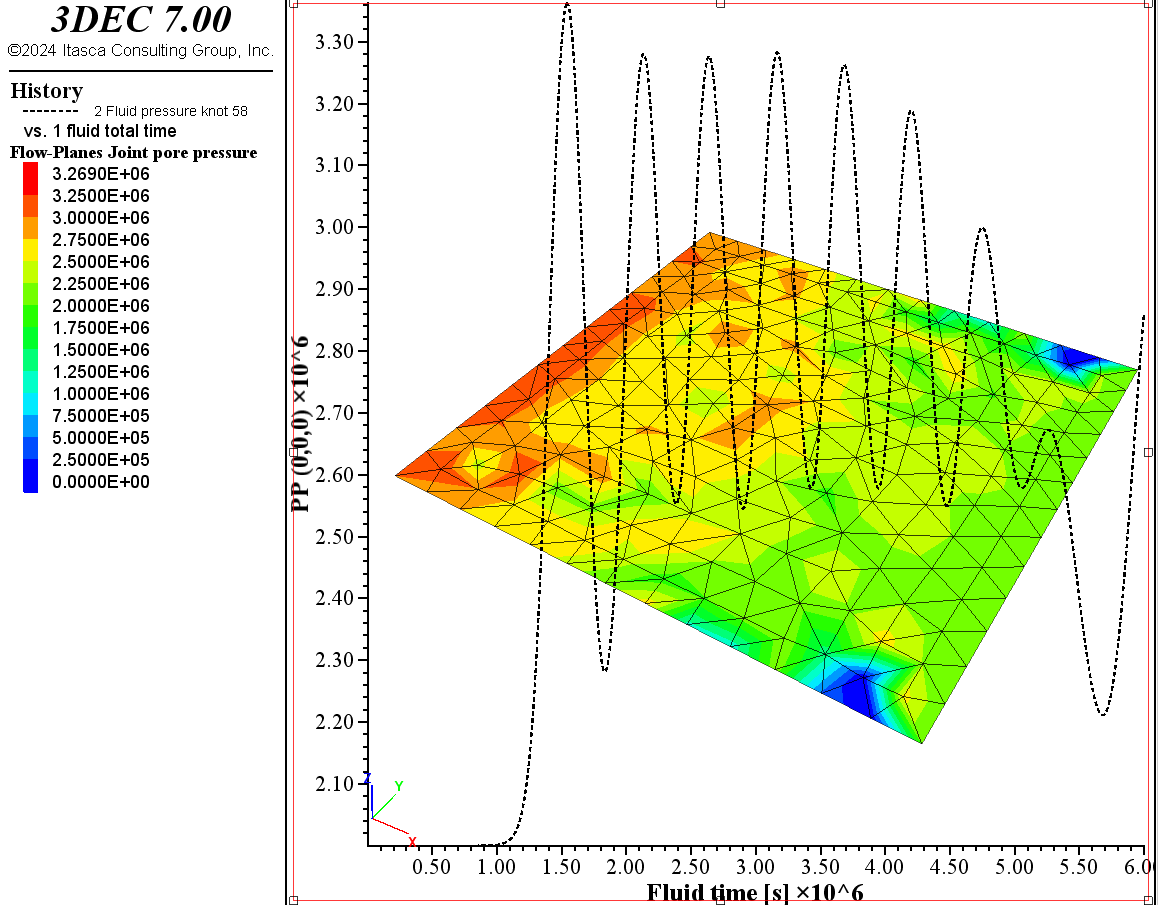Hi there everyone!
So, we are running some tests for possible fault reactivation under given imposed pore pressure.
We started from the documentation example coupled-fast. When changing the model dimensions (from metric to kilometric scale), pressure does not propagate:
We tried increasing the timestep and reducing the mesh size, but nothing changed.
Also, since we had to increase the mesh size, the apparent water bulk would greatly be reduced, hence getting out of the “incompressible fluid” necessity for fast-flow computations. We also ran the fully coupled script (without fast flow and with actual water bulk), but still no luck.
I provide the full script below.
Any advice welcome!
Cheers
Theophile
; fully coupled analysis with fast-flow
model new
model config fluid
model large-strain off
fish define set_props
;; Initial coupled-fast
;global xmin = -1.
;global xmax = 1.
;global ymin = xmin
;global ymax = xmax
;global zmin = xmin
;global zmax = xmax
;global z_jset = (zmin+zmax)/2.
;global edgelen = 0.25
;global ncycles = 2500
; Upscaled
global xmin = -4000.
global xmax = 4000.
global ymin = -3000.
global ymax = 3000.
global zmin = -3000.
global zmax = 0.
global z_jset = (zmin+zmax)/2.
global edgelen = 250.
global ncycles = 10000
end
[set_props]
block create brick [xmin],[xmax] [ymin],[ymax] [zmin],[zmax]
block cut joint-set dip 0 dip-direction 90 origin 0 0 [z_jset]
block zone generate edgelength [edgelen]
block zone cmodel assign elastic
block zone prop density 2500 shear 2e9 bulk 5e9
block contact jmodel assign mohr
block contact property stiffness-normal 1e10 stiffness-shear 1e10
flowplane vertex property aperture-initial 1e-4 ...
aperture-minimum 1e-5 aperture-maximum 1e-3
block fluid property bulk 2e9 density 1000 viscosity 1e-3
block gridpoint apply vel-x 0.0 range pos-x [xmin]
block gridpoint apply vel-x 0.0 range pos-x [xmax]
block gridpoint apply vel-y 0.0 range pos-y [ymin]
block gridpoint apply vel-y 0.0 range pos-y [ymax]
block gridpoint apply vel-z 0.0 range pos-z [zmin]
block gridpoint apply vel-z 0.0 range pos-z [zmax]
block insitu stress -1e7 -1e7 -1e7 0 0 0 nodis
block insitu p-p 2e6
; initial equilibrium - mechanical
model fluid active off
block fluid property bulk 0.0
model hist mech unbal-max
model cyc 100
; inital equilibrium - fluid
model fluid active on
model mech active off
block fluid property bulk 2e9
model cyc 100
block gridpoint ini disp 0 0 0
block contact reset disp
flowknot apply p-p 3.0e6 range pos-x [xmin]
flowknot apply p-p 2.0e6 range pos-x [xmax]
block fluid fast-flow active on
model mech active on
block fluid property bulk [2e9/edgelen^3]
model mechanical substep 2000
model mechanical slave on
history delete
model his fluid time-total
flowknot his p-p pos 0 0 [z_jset]
model fluid timestep max 1e-3
model solve fluid cycles [ncycles] or mechanical ratio 1e-6
;model save "coupled-fast"


